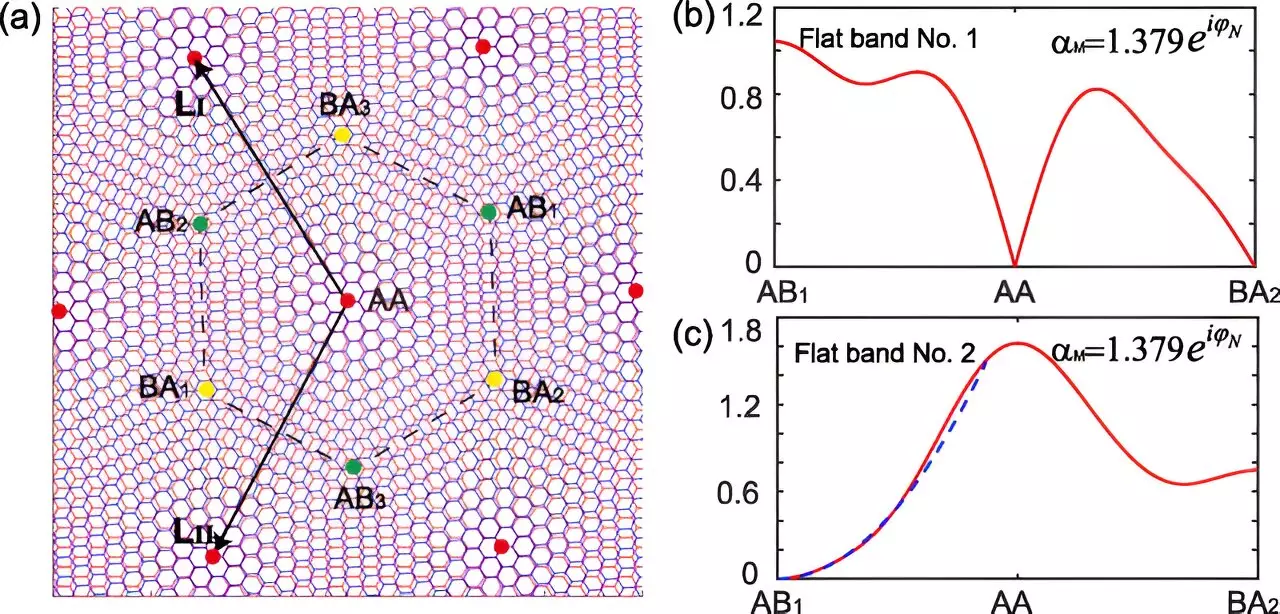

Graphene, a single layer of carbon atoms arranged in a hexagonal lattice, has already proven to possess unique and exciting electronic properties. However, when multiple layers of graphene are combined and twisted at specific angles, even more exotic physics come into play. Recently, RIKEN physicists have delved into the realm of twisted bilayer graphene and uncovered how magnetic fields can further engineer flat bands and create a playground for even more unconventional phenomena.
Twisting two layers of graphene results in what is known as the moiré pattern, where a larger pattern emerges due to the rotation of one layer over the other. This twisting leads to a significant change in the properties of the material, including the emergence of correlated insulator behavior and superconductivity at specific angles. The interlayer coupling between twisted graphene layers plays a crucial role in altering the band structure and creating flat bands where electron kinetic energy is minimized.
In twisted bilayer graphene, the flat bands that arise due to specific twist angles are where the most intriguing physics occurs. These flat bands exhibit a unique two-fold degeneracy, meaning that two different quantum states can possess the same energy level. The interactions between electrons in these flat bands become dominant, giving rise to strongly correlated electronic phenomena, such as unconventional superconductivity.
Ching-Kai Chiu, Congcong Le, and their team at RIKEN have taken the exploration of twisted bilayer graphene a step further by introducing a spatially varying magnetic field. This magnetic field introduces additional magic angles and flat bands that are quadruply degenerate, providing a higher level of degeneracy and the potential for even more correlated phenomena to emerge. The magnetic phase also offers a novel degree of freedom to customize the electronic band structure, opening up new pathways for research and exploration in the field of exotic physics.
The discovery of these unique phenomena in twisted bilayer graphene has sparked excitement within the physics community, with researchers eager to uncover similar properties in other materials. The quest is now on to identify new platforms that can host flat bands and exhibit the same correlated electron behavior seen in graphene. By systematically searching for materials with these desirable properties, scientists hope to expand our understanding of exotic physics and pave the way for the development of advanced electronic devices with unprecedented functionalities.
In the realm of software development, the ability to swiftly and accurately address bugs is…
The realm of quantum computing and communication is not just an abstract dream anymore; it…
In a remarkable leap for the field of material science, a collaborative research initiative has…
Throughout Earth's vast history, our planet has endured five major mass extinction events that reshaped…
Rainfall is a vital element of our planet’s hydrological cycle, yet many aspects of its…
On a night when the universe aligns, a mesmerizing phenomenon awaits: the appearance of the…
This website uses cookies.